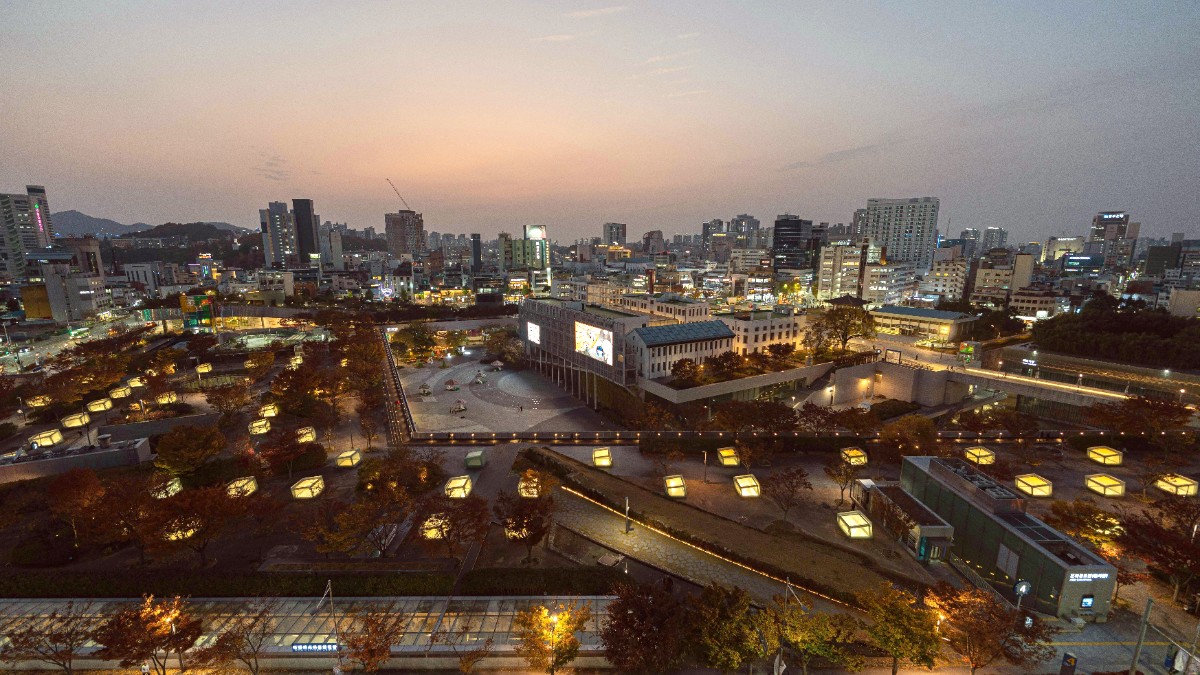
Jeollanam Do, South Korea
Gwangju's culinary reputation comes from the fertile plains, abundant seafood, and deep agricultural traditions of the Jeolla region (Honam Bapssang, 호남 밥상). This provides fresh, high-quality ingredients.
Jeolla cuisine has generous portions, a diverse array of side dishes (banchan), and bolder, spicier, and richer flavors compared to other Korean regions. Freshness and flavor are .
Abundant use of fresh vegetables, various kinds of kimchi (a cornerstone), locally sourced seafood, and high-quality rice.
Fermented soybean paste (doenjang) and chili paste (gochujang) are fundamental. Various other fermented sauces add depth and complexity.
Flavors are often spicy, savory, and deep, with a complex interplay of sweet, sour, and umami notes. Fermentation defines unique regional layers of flavor.
Grilled short rib patties, often combining beef and pork, pounded and grilled for a tender, savory, and slightly sweet flavor.
Visit Tteokgalbi Alley in Songjeong-dong for many specialist restaurants.
Bibimbap topped with raw beef sashimi. The Jeolla region's version is celebrated for its exceptionally fresh ingredients and generous portions.
A very satisfying and high-quality local dish.
Gopchang Jjeongol is a spicy beef intestine hot pot. Ori Tang is a rich, savory duck soup, often with perilla seeds, known for its health benefits.
Hearty communal meals, especially fitting for colder months.
A traditional cloudy rice wine, often brewed locally, it pairs wonderfully with savory dishes.
Soju is a clear distilled spirit. Sikhye is a sweet rice punch, a refreshing dessert beverage. Also, look for local fruit juices.
Gwangju has a growing number of upscale restaurants, often in luxury hotels or the Sangmu district. They offer refined Korean or high-quality international dishes in an elegant atmosphere.
Mid-range restaurants are abundant, providing excellent value and authentic Gwangju flavors, from traditional eateries to specialized Ori Tang or Tteokgalbi spots. Budget options include traditional markets.
A range of international cuisine options are available, including Italian, Japanese, Chinese, and some Southeast Asian restaurants. These are often found in larger commercial areas and near universities.
Finding entirely meat- and fish-free dishes can be difficult. Temple Cuisine (사찰음식) provides the best option. Request "gogi ppaego" (meat-free) for dishes like Bibimbap, but confirm sauces are also animal-product free.
Many banchan are naturally vegetarian or vegan.
Halal and Kosher availability is very limited. Gluten-free options are extremely difficult due to pervasive soy sauce and gochujang. Cross-contamination is common.
Self-catering and carrying translated cards are advisable for these needs.
Papago (Naver Papago) helps communicate dietary restrictions effectively.
Prepare small cards in Korean explaining your dietary needs (e.g., "저는 채식주의자입니다" - I am a vegetarian).
Search for forums or blogs by travelers with similar dietary needs who have traveled in Korea.
Focus on naturally compliant dishes where possible (e.g., plain rice, simple vegetable side dishes).
A street in Songjeong-dong dedicated to restaurants specializing in Gwangju's unique grilled short rib patties. A concentrated experience of this regional specialty.
A true taste of Gwangju's culinary identity.
A traditional Jeolla dining style where an entire table is filled with a vast array of dishes (20+ banchan) alongside a main course.
An overwhelming but delightful culinary experience, demonstrating regional generosity.
For a refined dining experience, consider restaurants within luxury hotels in the Sangmu district. These establishments focus on high-quality ingredients and artful presentation.
Mid-range restaurants throughout the city provide excellent opportunities for authentic Korean meals. Look for "백반" (baekban) restaurants for full set meals with many banchan.
A street dedicated to Gwangju's famous grilled short rib patties, offering a concentrated culinary experience.
Gwangju's largest and oldest traditional market, with numerous food stalls for fresh and affordable local dishes.
Bustling areas with pop-up street food vendors (Chungjang-ro) and many affordable student-friendly restaurants and cafes (Chosun University / Chonnam National University).
Most Korean meals are designed for sharing, promoting connection and allowing you to try a variety of flavors.
Shared large portions of central dishes.
A celebration of fresh ingredients and bold flavors.
Naver Map or Kakao Map can help find restaurants, view menus, and read reviews, though English support for small eateries might be limited.
Look for restaurants with a good number of local patrons, especially during meal times, as this often indicates quality and authenticity.
Explore specific food alleys, like the Tteokgalbi Alley, for a concentrated experience of a particular dish.
Tipping is not customary in South Korea. The service charge is usually included in the price or not expected.